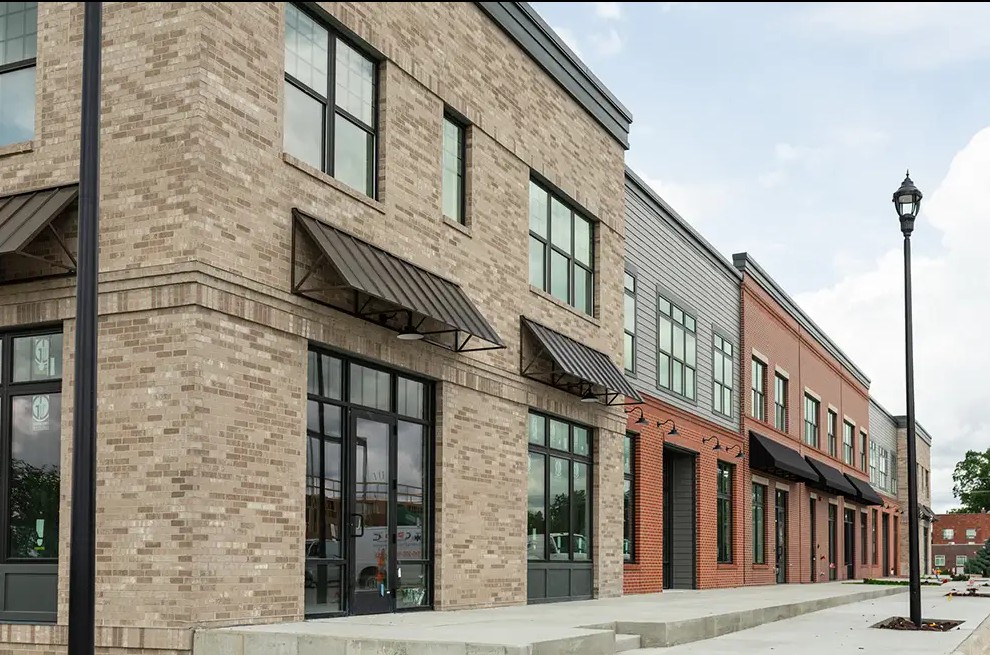Architects wriggle out of the recession
Studies say the profession suffered a dramatic loss of jobs and revenues

Architects are among the first to see the construction industry go boom and bust.
The profession still is recovering from the Great Recession, which saw firms trim staff by nearly one-third across the nation. However, that recovery could stumble over something called the “fiscal cliff,” the automatic triggering of $1.2 trillion in federal budget cuts scheduled for Jan. 2.
Whether the country reaches that cliff is a big question. Congress and the president could steer clear by adopting a budget before the automatic spending reductions occur. But just in case that doesn’t happen, some groups and economists are predicting dire consequences.
Among them is the American Institute of Architects (AIA), which earlier this month released a report saying the cuts could trim at least $25 billion from what the federal government typically spends on the design, construction and rehabilitation of its properties.
Those cuts would be made from 48 budget accounts, the AIA said, affecting everything from Department of Defense buildings to dams under the control of the U.S. Army Corps of Engineers.
It goes without saying that any drop in construction activity at the federal level would be felt by architects.
Just how much those cuts would affect firms in Greater Des Moines is uncertain, although several count on work in the federal sector.
One of those firms is DLR Group Inc., which has an office in Urbandale and an international reach. Vince Ward, marketing director for the Urbandale office, said the company is so diverse that cuts in federal spending might not have a big impact.

“Our business is doing really well; we’re coming off the best year ever nationally,” he said.
And it is true that Greater Des Moines firms generally don’t feel the devastating effects of a down economy.
“The last couple of years, our profession has been impacted, but maybe not to the extent of other areas,” said Linda Schemmel, a planner for the city of West Des Moines and president-elect of the AIA Iowa chapter. “We’re the first to feel the effect, because if projects slow down, we are not getting the work.”
Another AIA study found that in the Midwest, architects are recovering from the recession at a slower pace than their counterparts elsewhere in the country.
Nationally, architects billed for more design work in August, with an index entering positive territory for the first time in five months, the AIA said.
The billings are considered an indicator of construction activity nine to 12 months down the road.
But in the Midwest, billings declined slightly in August.
“Although the Midwest region index slightly declined, the positive trends from the rest of the United States will likely reach the Midwest region. Similar to other trends, sometimes the Midwest is the last to see it,” said Jessica Reinert, executive director of the AIA Iowa chapter.
Architecture firms have experienced a 40 percent drop in revenues since the beginning of the recession in 2008 and have had to cut personnel by nearly a third, according to a report released today.
The industry continues to suffer as construction activity lags the national recovery, according to an AIA survey of its members.
Total construction spending levels, which exceeded $1 trillion in 2008, fell to under $800 billion in 2011. As a result, gross revenue at architecture firms declined from more than $44 billion in 2008 to $26 billion by 2011, a 40 percent decline over the three-year period.
Construction payrolls peaked in early 2007 and steadily declined through mid-2011 due to the housing downturn. Positions at architecture firms generally have followed the path of the broader construction industry.
Due to the heavy reliance of architecture firms on nonresidential construction activity, payroll positions continued to grow through mid-2008, according to the AIA. But at that point, they dropped sharply through early 2011 and have not recovered much since.
Between 2007 and 2011, more than 28 percent of positions at architecture firms disappeared, more than erasing the 18 percent increase in architecture positions during the 2003-2007 upturn.
The recession did lead to the demise earlier this year of one notable architecture firm. Dubuque-based Durrant Group Inc. closed its doors and walked away from jobs in progress in April after it attempted to reorganize its finances under federal bankruptcy law, then failed to find a buyer for the 80-year-old company.










